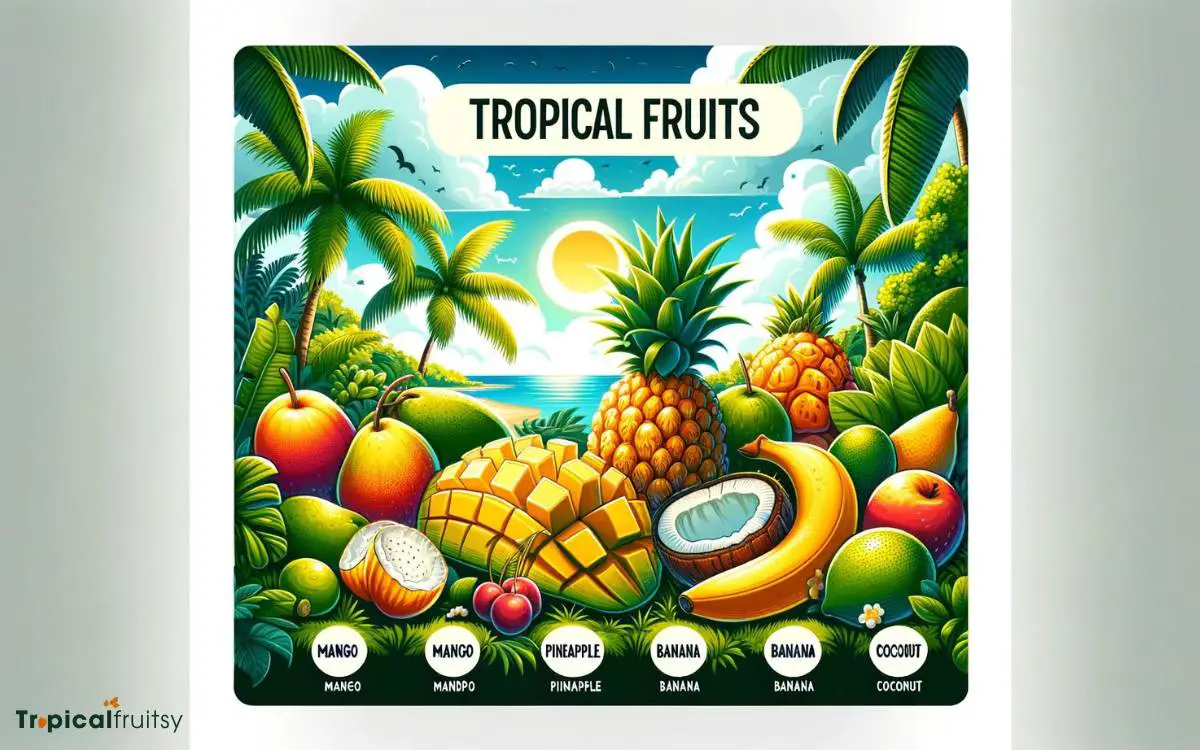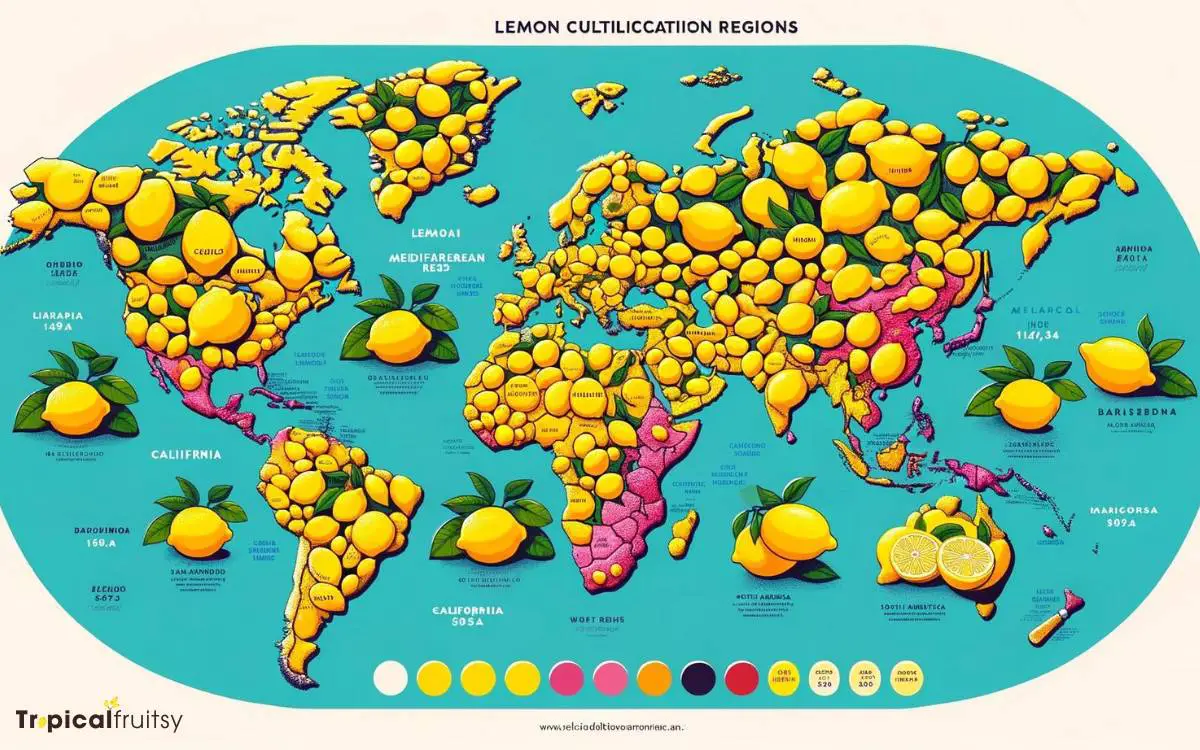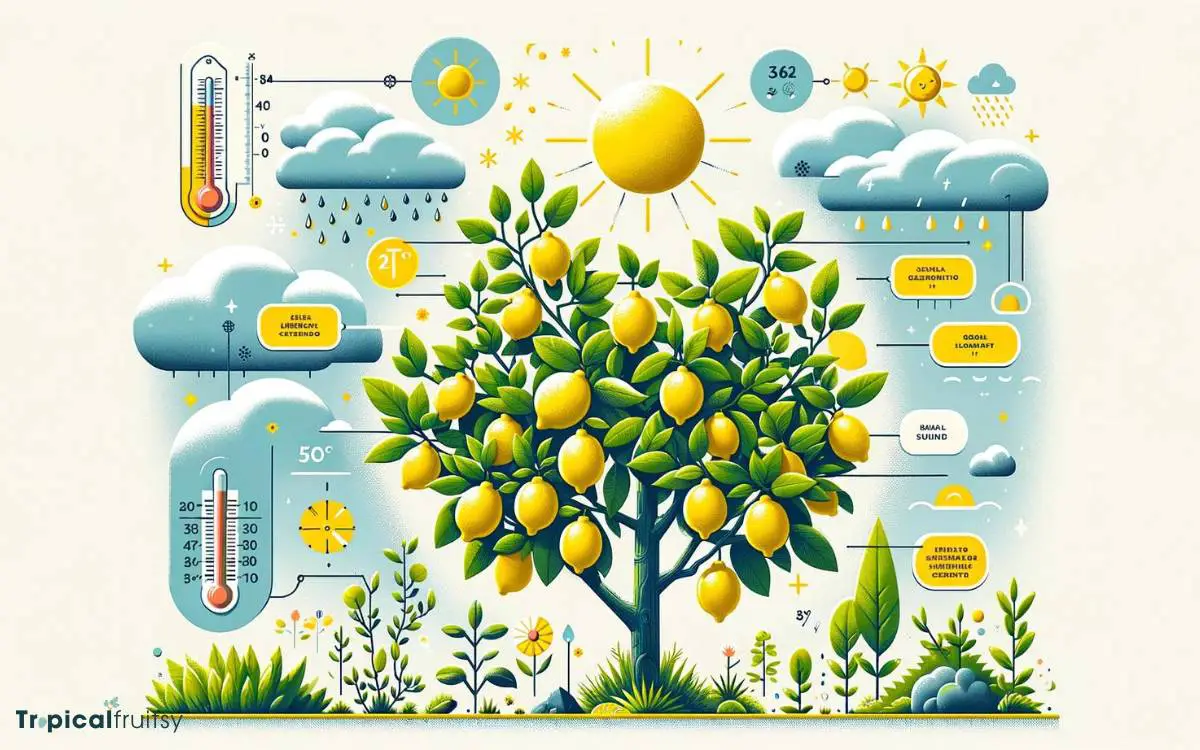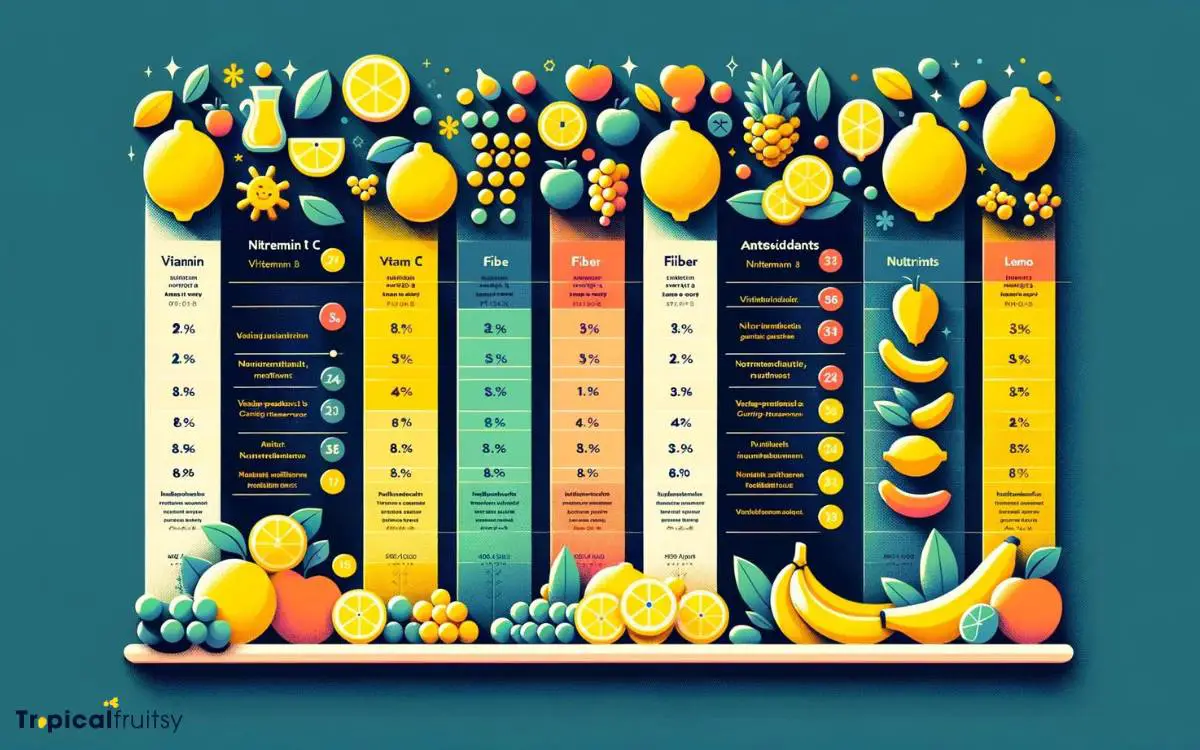Is Lemon a Tropical Fruit? Explained!
Lemons are not typically classified as tropical fruits; they are considered to be subtropical. They thrive in mild, temperate regions that do not experience the extreme heat typical of tropical climates.
While lemons can grow in warmer climates, they require cooler winter periods for successful cultivation.
Tropical fruits are generally defined as those that originate and grow in a tropical climate—a region located between the Tropic of Cancer and the Tropic of Capricorn.
These fruits typically require warm temperatures year-round and do not tolerate frost. Lemons, however, grow best in subtropical climates where there are distinct warm summers and cooler winters, but still free from extreme cold.
For example:
Despite their sunny appearance, lemons are subtropical fruits, flourishing in mild climates with cool winters.

Key Takeaway
3 Climate Types: Fruit Classification and Examples
| Climate Type | Fruit Classification | Examples |
|---|---|---|
| Tropical | Tropical Fruits | Mango, Pineapple, Papaya |
| Subtropical | Subtropical Fruits | Lemon, Orange, Grapefruit |
| Temperate | Temperate Fruits | Apple, Cherry, Pear |
Defining Tropical Fruits

Tropical fruits are a diverse group of plants that typically grow in the warm, humid climates of the Earth’s equatorial regions.
These regions, characterized by their consistent temperatures and extended daylight hours, create an environment conducive to the growth of a wide array of fruit species.
This category of fruits is botanically diverse, including species from various plant families.
Many tropical fruits, such as bananas, mangoes, and papayas, are known for their vibrant colors, distinctive flavors, and rich nutrient profiles, often containing high levels of vitamins, minerals, and antioxidants.
Scientific classification does not strictly define ‘tropical fruit’ by geographical origin alone, but also considers the plant’s growth requirements and tolerance to climatic conditions, which are key to their successful cultivation and propagation.
The Origin of Lemons

Lemons, scientifically known as Citrus limon, are believed to have originated in the foothills of the Himalayas in Northern India and neighboring countries.
From this genetic cradle, lemons spread across the world, adapting to various climates and cultural uses.
Their journey is not merely one of geography, but also of human cultivation and selection, which has significantly influenced their current distribution and varieties.
To understand the significance of lemons’ origin, consider the following points:
- Genetic studies suggest lemons are a hybrid between bitter orange (Citrus aurantium) and citron (Citrus medica).
- The Silk Road played a crucial role in disseminating lemons westward, reaching the Mediterranean region by 200 AD.
- Ancient texts and artifacts indicate lemons were valued in early Roman and Persian societies for medicinal purposes.
- Through centuries of cultivation, lemons have diversified into numerous cultivars with distinct characteristics, such as the ‘Eureka’ and ‘Lisbon’ varieties.
Lemon Cultivation Regions

The cultivation of lemons has expanded beyond their ancestral lands, flourishing in a variety of climates that range from subtropical to Mediterranean regions around the globe.
Lemon trees (Citrus limon) thrive in warm, frost-free environments with well-drained, slightly acidic soils.
Optimal growth occurs in regions with moderate temperatures ranging from 25°C to 30°C and an annual rainfall between 750 to 1,250 millimeters.
Major lemon-producing countries include India, Mexico, China, Argentina, Brazil, and the United States, particularly in California, Arizona, and Florida. In the Mediterranean basin, Italy and Spain are notable for their extensive lemon orchards.
These areas provide the necessary long, sunny growing seasons and mild winters that are conducive to the production of high-quality lemons with desirable acidity and aromatic oils.
Climate Preferences of Lemons

How do climatic conditions affect the growth and quality of lemon crops?
Lemons thrive in a subtropical climate where mild temperatures predominate, but they also exhibit a degree of adaptability.
The optimal conditions for their cultivation are as follows:
- Temperature: Ideal temperatures range between 77°F to 86°F (25°C to 30°C) during the growing season.
- Frost Sensitivity: Lemon trees are vulnerable to frost; temperatures below 29°F (-1.7°C) can damage or kill flowers and young fruits.
- Rainfall: They require moderate rainfall, well-distributed throughout the year, with supplementary irrigation during dry spells.
- Sunlight: Full sun exposure is crucial for vigorous growth and fruit production.
Understanding these climate preferences clarifies why lemons are often associated with warmer regions, yet they are not confined to tropical zones. This leads us into examining how lemons compare to fruits that are indisputably tropical.
Comparing Lemons to Tropical Fruits

Despite thriving in subtropical climates, lemons differ from tropical fruits in several key aspects of their environmental requirements and botanical characteristics.
Whereas tropical fruits typically originate from regions with uniformly high temperatures and humidity, lemons are cultivated in more varied climates, requiring cooler temperatures for dormancy and successful fruit set.
Botanically, lemons (Citrus limon) belong to the Rutaceae family, distinguished from many tropical fruits by their composite fruit structure, which includes a thick, zesty rind and segmented flesh within.
Furthermore, lemons are notable for their higher citric acid content, which imparts a distinctive tartness not commonly found in the sweeter palette of tropical fruits.
This acidity is a fundamental component of lemons’ nutritional profiles and benefits, which will be examined in the following section.
Nutritional Profiles and Benefits

Within the context of their cultivation and botanical classification, lemons also offer a robust nutritional profile and multiple health benefits.
Known primarily for their high vitamin C content, lemons provide a host of other essential nutrients that contribute to overall health and wellbeing.
The following list highlights key components of the lemon’s nutritional makeup:
- Vitamin C: An antioxidant that supports immune function and skin health.
- Citric Acid: May reduce the risk of kidney stones by increasing urine volume and pH.
- Flavonoids: Bioactive compounds with anti-inflammatory and potential anticancer properties.
- Dietary Fiber: Essential for digestive health and may aid in maintaining a healthy weight.
Understanding these nutritional elements underscores the significance of lemons beyond their culinary uses, illustrating their value in a balanced diet.
Lemon Varieties Around the World

Lemon varieties exhibit a wide range of characteristics influenced by their geographic origin, with distinct flavor profiles that vary from region to region.
The impact of cultivation climate on lemon phenotypes is evident, as local environmental conditions dictate fruit size, acidity, and essential oil content.
Research into rare lemon types has expanded our understanding of citrus diversity, revealing lesser-known cultivars with unique properties worthy of agricultural and culinary exploration.
Geographic Flavor Differences
Examining various lemon varieties globally reveals distinct flavor profiles influenced by regional climates and soil conditions.
The terroir—comprising climate, soil, and topography—plays a significant role in shaping the organoleptic qualities of citrus fruits.
Here we delve into the nuances of lemon flavors across different geographies:
- Amalfi Lemons (Italy) – Noted for their fragrant, less acidic taste, and a slightly sweet note.
- Eureka Lemons (United States) – Characterized by their high citric acid content, resulting in a sharper, tangy flavor.
- Meyer Lemons (China/United States) – Renowned for their sweeter, less acidic profile, with a complex, spicy aroma.
- Fino Lemons (Spain) – Display a balanced taste, moderately acidic with a strong, aromatic zest.
Cultivation Climate Impact
The cultivation climate, a critical determinant of lemon fruit characteristics, markedly influences the growth and flavor profile of different lemon varieties around the globe.
Optimal lemon production typically occurs in subtropical regions where moderate temperatures and well-distributed rainfall promote vigorous tree growth and fruit set.
However, some cultivars, such as ‘Eureka’ and ‘Lisbon’, have adapted to a wider range of climates including Mediterranean and cooler coastal zones.
These varieties demonstrate a remarkable phenotypic plasticity, allowing them to maintain productivity and sensory qualities despite environmental variabilities.
Scientific agronomic practices further modulate these traits by manipulating variables such as soil pH, irrigation schedules, and nutrient management, thus tailoring lemon growth to specific regional climates and enhancing the fruit’s commercial and nutritional appeal.
Rare Lemon Types
Beyond the common cultivars, numerous rare lemon varieties flourish across different parts of the world, each with unique characteristics and adaptations to their local environments.
To illustrate the diversity among these citrus fruits, consider the following examples:
- Ponderosa Lemon: A hybrid between a lemon and a citron, known for its exceptionally large size and thick rind.
- Pink Variegated Lemon: Also called the variegated Eureka lemon, this fruit is recognized by its striped green and yellow skin and pink flesh.
- Buddha’s Hand: Notable for its elongated, finger-like sections, this variety is primarily used for its zest and aromatic properties.
- Yuzu: A cold-tolerant Japanese variety, prized for its unique flavor and fragrant zest, widely used in culinary and cultural practices.
Each variety contributes to the rich tapestry of lemon biodiversity and holds particular significance in their respective regions.
Conclusion
While lemons thrive in warm climates, they are not classified as tropical fruits but rather as subtropical. Their cultivation across various regions demonstrates versatility beyond the confines of the tropics.
Lemons, akin to drops of sunshine enriching earth’s bounty, offer a rich tapestry of nutritional benefits and varietal diversity.
Their global presence underscores both adaptability and significance within the realm of citrus fruits, transcending geographical and culinary boundaries.






